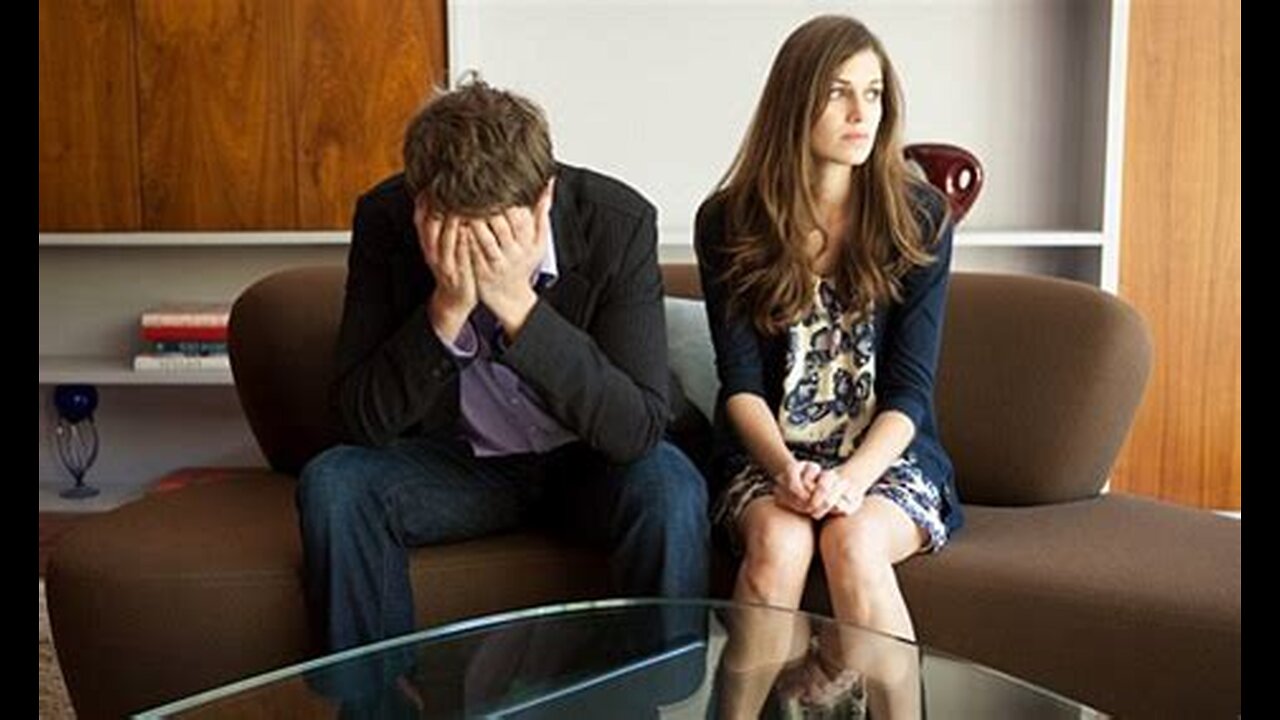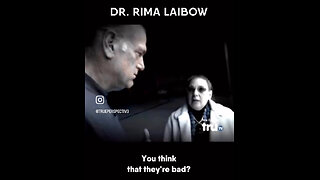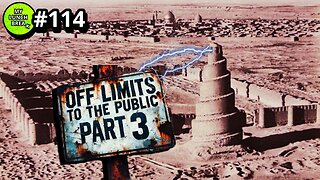Premium Only Content

Beyond the Stoic Mask: Rethinking Emotions in Marriage
Emotional authenticity remains one of the most treasured yet misunderstood aspects of human relationships. Traditionally, men were expected to suppress or strictly control “soft” emotions—sadness, fear, insecurity—leading to what some view as stoic composure or, alternatively, emotional unavailability. Although shifts in cultural norms now encourage more openness, the reality is still nuanced. This article offers a new lens through which to examine these evolving expectations, focusing on how emotional expression in marriage can become a catalyst for deeper connection—provided both partners navigate it with awareness and balance.
1. Rethinking the Foundations: Quiet Strength vs. Meaningful Openness
Historic Roots of the “Strong, Silent” Archetype
For generations, men were taught to be familial rocks, unshaken by crisis. Rather than purely an outdated convention, one can see traces of protective instincts at work: emotional containment was often linked to security and order in a household. Still, this archetype can overlook a man’s complex emotional life, causing silent battles to surface in unexpected ways—anger, passive-aggression, or sudden emotional breakdowns.
Toward a New Kind of Strength
A fresh approach suggests that real strength blends stability with genuine vulnerability. Emotional openness does not detract from a man’s protective role; it can enhance it. A husband who can empathize, communicate, and respectfully articulate his challenges offers his spouse a window into his inner life, fostering trust. Instead of burdening her with chaos, he invites her into a balanced emotional exchange—where each partner participates in mutual support.
2. When Public Vulnerability Meets Domestic Realities
The Public Sphere: Applauding Emotional Transparency
Men who share personal struggles or heartbreak in social spaces (like men’s groups or online communities) often receive admiration for their courage. Outsiders see a man confidently subverting stereotypes, and they applaud his honesty. This external validation affirms that emotional expression is progressive.
The Private Sphere: The Stakes of Intimacy
Yet, behind closed doors, the dynamic is different. In marriage, emotional outpourings come with practical consequences—shared finances, daily responsibilities, and co-parenting tasks must still function. A spouse who sees her partner in repeated emotional states might feel anxious about whether she must shoulder more tasks or become a perpetual emotional caretaker. This is less about lacking compassion and more about the delicate balance of roles within a shared life. Both partners rely on each other for resilience, making it challenging when emotional burdens appear one-sided or excessive.
3. The Hidden Biology Behind Emotional Tears
Hormones Are Not Gendered
A cultural myth often associates tears with femininity. But the surge of emotion in men can stem from complex hormonal mixes—oxytocin, vasopressin, even traces of adrenaline. None of these substances is exclusive to a single gender. A father’s tear at a child’s first milestone or a husband’s tear recalling a cherished memory with his wife are universal emotional phenomena, pointing to a deeper reservoir of shared human feeling.
Oxytocin and Bonding
Commonly labeled the “love hormone,” oxytocin fosters attachment and empathy. When a man tears up over affectionate memories, it’s not merely a feminine trait but a testament to the bonding process. This underscores that men’s emotional surges are both normal and beneficial for sustaining relational closeness.
4. The Evolving Marriage Equation: Emotional Exchange with Boundaries
Beyond Traditional Masculine-Feminine Polarity
In contemporary marriages, both men and women can adopt roles that shift from archaic norms. Women, too, may yearn for emotional balance, not absolute stoicism. Men may desire to release the heaviness of unspoken sorrow or anxieties. A key is acknowledging that emotional fluidity does not negate each partner’s reliability.
Co-Creation of Stability
Constructive emotional sharing demands that neither spouse is expected to be “the stoic anchor” all the time. Instead, each partner rotates between comforting and being comforted, ensuring mutual support. This reciprocity fosters a dynamic synergy: the marriage becomes a safe container for emotional honesty, without either partner feeling overwhelmed or perpetually cast as caretaker.
5. A Wider Cultural Shift: Toward Holistic Human Expression
Society’s Growing Acceptance
Public praise for men who embrace tears or express tenderness signals a cultural pivot. Though some circles still cling to the “stiff upper lip,” many communities see emotional range as essential to well-rounded personhood. This shift also invites men to discover healthier coping mechanisms beyond aggression or emotional numbness.
Ethical Responsibility to Self and Others
Men exploring emotional expression must walk a subtle line: honesty, yes, but also self-awareness so that emotional outpourings do not unduly burden a spouse. Meanwhile, women can benefit from adjusting expectations—welcoming a partner’s vulnerability while clarifying boundaries so that emotional labor does not default to them alone.
6. Suggestions for Integrating Emotional Openness
1. Engage in Mutual Check-Ins
• Schedule regular dialogues, each partner sharing worries, triumphs, or needs, so the emotional load remains balanced.
2. Set Context
• If a man feels a surge of sadness or anxiety, a short heads-up can prepare the spouse, preventing surprise or confusion.
3. Seek Support Systems
• Men’s emotional expression can also find outlets in group therapy, spiritual communities, or friends, ensuring a spouse is not the sole emotional anchor.
4. Normalize Vulnerability
• Both partners can adopt language that welcomes feelings—phrases like, “I value hearing how you truly feel,” or “It’s safe to share here,” reinforcing acceptance rather than fear.
7. Final Thoughts: Honoring Complexity, Fostering Growth
Emotional expression and the interplay of gender expectations in marriage remain complex and evolving. Men have long been nudged into stoicism, causing them to bury heartfelt reactions. Yet, as society opens to broader definitions of strength and synergy, more couples are finding ways to blend authenticity with supportive mutual roles. The result is not a simplistic “men must cry more” or “women must endure emotional baggage,” but a two-way interplay of acceptance and responsibility.
Encouraging a Nuanced Conversation
Reevaluating emotional expression means challenging entrenched stereotypes, respecting biology’s role in forging attachment, and realizing that tears and vulnerability—when used constructively—can weave couples closer together. Far from eroding a husband’s reliability, such emotional honesty can enrich the marriage with greater resilience, trust, and love.
A Reflection for the Future
In modern partnerships, the question isn’t whether men should show emotion, but how that expression can align with shared well-being. By integrating mindful communication, acknowledging our hormonal universality, and respecting each partner’s emotional capacity, marriages evolve into havens of empathy—a space where vulnerability and courage fuse into a renewed vision of marital harmony and personal growth.
-
 1:29
1:29
FragmentsOfTruth
3 days agoImpending Crisis? The Debate Over Compulsory Vaccination and Sterility Claims
1321 -
 1:03:41
1:03:41
Man in America
14 hours agoAre Trump & Musk the COUNTER-ELITES? w/ Derrick Broze
53K31 -
 3:45:08
3:45:08
DLDAfterDark
5 hours ago $7.62 earnedDLD Live! SHTF Handguns! Which Would You Choose?
29.6K2 -
 1:50:38
1:50:38
Mally_Mouse
8 hours agoSaturday Shenanigans!! - Let's Play: Mario Party Jamboree
40.5K -
 1:13:00
1:13:00
Patriots With Grit
12 hours agoWill Americans Rise Up? | Jeff Calhoun
32.9K13 -
 14:55
14:55
Exploring With Nug
12 hours ago $10.50 earnedWe Found Semi Truck Containers While Searching for Missing Man!
50.7K7 -
 27:57
27:57
MYLUNCHBREAK CHANNEL PAGE
20 hours agoOff Limits to the Public - Pt 3
108K62 -
 38:07
38:07
Michael Franzese
12 hours agoLeaving Organized Crime and Uncovering Mob in Politics: Tudor Dixon and Michael Franzese
91.6K15 -
 2:42:54
2:42:54
Jewels Jones Live ®
2 days agoAMERICA IS BACK | A Political Rendezvous - Ep. 111
73.1K48 -
 8:47:33
8:47:33
Due Dissidence
1 day agoLIVE: Workers Strike Back Conference ft. Chris Hedges, Jill Stein, Kshama Sawant, and More!
113K57